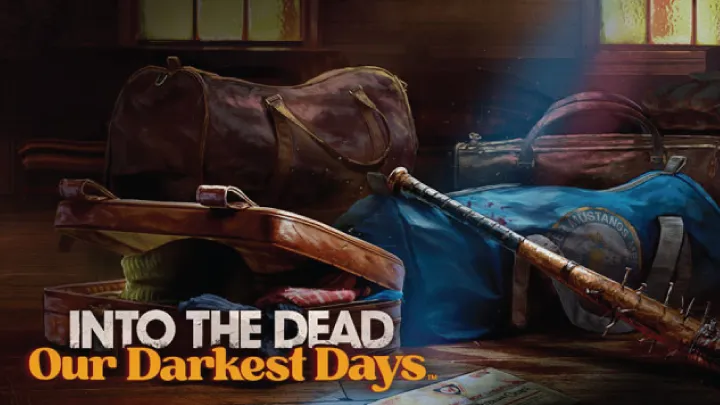Introduction
99 Nights in the Forest is not a simple survival game—it is a relentless test of endurance, decision-making, and adaptation. You are dropped into a vast and unpredictable wilderness, where danger lurks in the dark, resources are limited, and every choice has long-lasting consequences. Unlike quick survival modes found in casual games, here you must survive night after night for nearly 100 days in-game, facing increasing threats and dwindling supplies.
This guide is designed to help you navigate through all stages of the game. From your first night with nothing but basic tools to your final encounters with the forest’s deadliest predators and supernatural challenges, you’ll learn step-by-step strategies to survive. Whether you are a beginner exploring your first run or a veteran chasing mastery, these tips and guides will maximize your chances of surviving all 99 nights.
1. Getting Started: Your First Night
The opening nights are the most crucial. With no base and limited resources, your primary focus should be shelter, food, and safety.
Spend your first in-game day gathering wood, stones, and edible plants. Avoid venturing too far from your spawn point—exploration can wait. By nightfall, you should build a basic fire and construct a temporary shelter to keep yourself safe from wildlife and the cold.

Key tips for night one:
- Gather at least 15–20 logs before nightfall.
- Craft a torch as early as possible.
- Avoid making loud noises; predators are sensitive to sound.
Surviving your first night builds the foundation for everything to come.
2. Essential Tools and Crafting Basics
Crafting is the lifeline of 99 Nights in the Forest. Tools allow you to hunt, defend, and gather resources more efficiently.
Early game must-have tools include:
- Stone Axe: For chopping trees quickly.
- Spear: Effective for both fishing and self-defense.
- Torch: Essential for visibility and predator deterrence.
Later, focus on advanced items like bows, traps, and upgraded armor. The game’s crafting system rewards experimentation—sometimes combining unlikely materials leads to surprisingly useful tools.
Tip: Always carry a backup weapon. Tools can break mid-combat, leaving you vulnerable at critical moments.
3. Building Your Base Camp
By night 3–5, you should shift focus from temporary shelters to establishing a base camp.
Choose your location wisely. Ideal base spots include:
- Near a water source (for fishing and hydration).
- Surrounded by trees (for wood supply).
- On elevated terrain (to avoid flooding and predator ambushes).
Your base should include:
- Campfire: For warmth, cooking, and scaring predators.
- Storage Containers: To preserve food and materials.
- Defensive Walls: Essential once enemies grow stronger after night 20.
Think of your base as both fortress and lifeline—it is your safe zone in an otherwise hostile world.
4. Hunting, Gathering, and Farming for Food
Food management is one of the toughest parts of the game. Starvation is just as deadly as predators.
Strategies for reliable food:
- Hunting: Rabbits and deer are common early targets. Use traps to save energy.
- Fishing: Spears or crafted fishing rods provide a steady source of food.
- Farming: Around night 15, you should start planting crops. Farming ensures long-term food security.
Pro tip: Always cook food before eating. Raw meat can cause illness, which severely drains stamina during nighttime survival.
5. Navigating the Day-Night Cycle
The passage of time in 99 Nights in the Forest changes everything.
- Daytime: Safer for exploration, gathering, and hunting. Predators are less active.
- Nighttime: High-risk. Expect aggressive wildlife and supernatural encounters.
By night 30, nights become increasingly difficult, with more frequent attacks. You’ll need to spend more daytime preparing defenses and less time exploring far from your camp.

Golden rule: Plan every day with the night in mind. If you’re not ready when darkness falls, survival chances drop dramatically.
6. Combat Strategies and Defending Against Threats
Survival eventually becomes about combat. Wolves, bears, and supernatural forest creatures become regular threats.
Key combat tips:
- Keep Distance: Spears and bows are safer than melee combat.
- Use Traps: Defensive traps save resources and minimize risk.
- Stamina Management: Never engage enemies with low stamina—running away is sometimes smarter than fighting.
By night 50+, expect coordinated enemy attacks, not just random encounters. Upgrade weapons regularly and reinforce base walls to withstand waves of attackers.
7. Managing Resources Across 99 Nights
Survival is a marathon, not a sprint. Poor resource management often leads to failure in the later stages.
Resource priorities by timeline:
- Nights 1–20: Focus on wood, food, and stone.
- Nights 21–50: Stockpile weapons, traps, and storage.
- Nights 51–99: Conserve rare resources like iron and healing herbs for emergencies.
Tip: Never consume rare items early. Save healing potions and special weapons for boss-like threats that appear in later nights.
8. Exploring the Forest and Finding Secrets
The forest is massive and filled with mysteries. Exploration not only provides resources but also reveals hidden lore and secret items.
Areas to prioritize:
- Caves: Contain rare ores and hidden crafting materials.
- Ruins: Often guarded but rewarding with powerful artifacts.
- Rivers: Serve as natural guides for navigation and fishing hotspots.
Beware of overextending. Getting lost late in the day can leave you stranded in the dark without a campfire—a nearly guaranteed death sentence.
9. Surviving the Mid-to-Late Nights
By night 60, the difficulty spikes. Creatures grow faster, storms become more violent, and food becomes scarcer.

Survival strategies include:
- Layered Defenses: Multiple walls, traps, and escape routes.
- Resource Rotation: Alternate between farming, hunting, and exploring to prevent shortages.
- Team Play: In multiplayer mode, assign clear roles (hunter, farmer, builder) to maximize efficiency.
The late nights are about endurance and efficiency—every wasted action has consequences.
10. Long-Term Survival and Endgame Preparation
The final nights (90–99) are the ultimate test. By now, you should have:
- A fully reinforced base.
- Multiple food storage supplies.
- Upgraded weapons and armor.
- Backup shelters for emergencies.
Boss-level enemies appear around night 95, combining brute force and supernatural powers. Preparation is everything here—if you’ve managed resources wisely and learned combat strategies, you’ll stand a chance.
Surviving night 99 isn’t just about skill; it’s about every decision made since night one. The game rewards foresight, discipline, and adaptability.
Conclusion
99 Nights in the Forest is more than a survival game—it’s a psychological battle against time, nature, and your own mistakes. From building your first shelter to surviving waves of predators and supernatural enemies, every choice matters. The deeper you go, the more the game challenges your ability to adapt, prioritize, and endure.
If you treat the game as a quick sprint, you’ll fail. But if you approach it like a marathon—carefully balancing risk and reward—you can master the forest and claim victory on the 99th night.

















